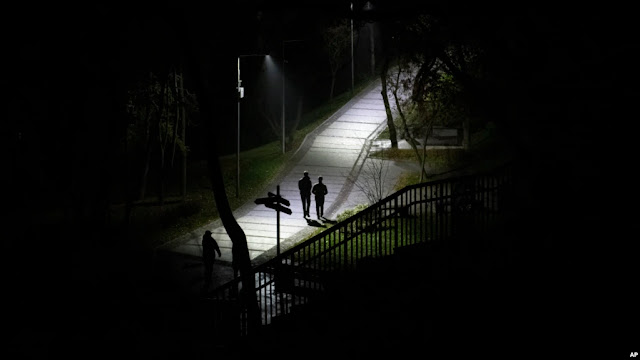The national team could teach its politicians a lesson
They began the
World Cup by losing to Saudi Arabia. Argentina’s footballers ended it as
champions, beating France, the holders, in a penalty shoot-out after a
thrilling 3-3 draw.
La selección, as the
national team is known, took home Argentina’s third cup, and the first in 36
years.
Argentina
expected, and in the end got, a ferocious match. When France took home the
World Cup in 2018, their team was younger and their players more
expensive than almost any other. Kylian Mbappé, then just 19,
became the second youngest player ever to score in a World Cup final, after
Pélé did so at 17 in 1958. This year the French squad is collectively worth
over $1.1bn, compared with Argentina’s more modest $645m.
Some 50,000 Argentine supporters descended on Doha for the final, compared with only 10,000 from France, a far richer and more populous country. Argentine hinchas, or fans, came armed with drums, giant flags in the national white and sky-blue stripes, and 500kg of yerba mate, the country’s favourite herbal drink.
Lionel Messi, Argentina’s 35-year-old captain, although widely regarded as the world’s best player for many years, had never managed to get his hands on the game’s most desired trophy.
Mr Messi has had a bumpy relationship with his home country, which he left at 13 to train in Europe. Compared with Diego Maradona, an Argentine midfield megastar of an earlier generation, Mr Messi, who got growth hormones as a child, was long considered timid and lacking in passion.
Maradona - who died in 2020 -was overheard in 2016 saying that Mr Messi didn’t “have enough personality to be a leader”. Argentines resented the fact that he won often with Barcelona, his club in Spain, but not with the national team. All that changed last year, when Argentina won the Copa América trophy for the first time in 28 years.
Since then, Messi’s jersey with the number 10, has become a national uniform. He has started to sound more combative. Clips of Mr Messi asking Wout Weghorst, a Dutch striker, “What’re you looking at, dummy?” after a nasty quarter-final match have been remixed to electronic dance music, printed on mugs, and tattooed on the bodies of super-fans.
In Argentina, the beautiful game is more than a sport. Ariel Scher, a journalist who writes about football, says “The construction of an identity in this country is unthinkable without some kind of link to football.”
The World
Cup victory comes at a time of national agony, with record droughts, inflation
reaching 100%, and fractious politics. The vice-president, Cristina Fernández
de Kirchner, survived an assassination attempt and earlier this month she
was sentenced to six years in jail over a corruption scandal.
Against
this chaotic backdrop, the national team has spread joy and even temporary
harmony.
Argentina’s
political class could learn from its sportsmen. Mr Messi shone not only because
of his talent but also because he could rely on the men around him. The
country’s divided government, in which the moderate president and the leftist
vice-president go for months without speaking, could take note. So could the
opposition, which has sometimes fomented the grieta - or divide- at the
expense of conciliation.
The final
lesson comes from Mr Messi and la selección’s manager,
Lionel Scaloni. In the past five World Cups, Argentina has done better with
managers who were humble and focused on planning than with managers who were
showmen. The showmen were Maradona in 2010, who, though an excellent player,
was a terrible coach, and Jorge Sampaoli in 2018. The hard workers have been
José Pékerman in 2006, Alejandro Sabella in 2014 and Mr Scaloni.
The
prudence and professionalism of Argentina’s manager and his star player offer a
sobering contrast to the amateurism with which Argentina’s economy is managed,
with a dozen exchange rates and many price and currency controls.
Argentina’s political leaders talk a good game, but fail to deliver results. Unlike
the quietly spoken, goal-focused Mr Messi.
Adapted from The Economist

































